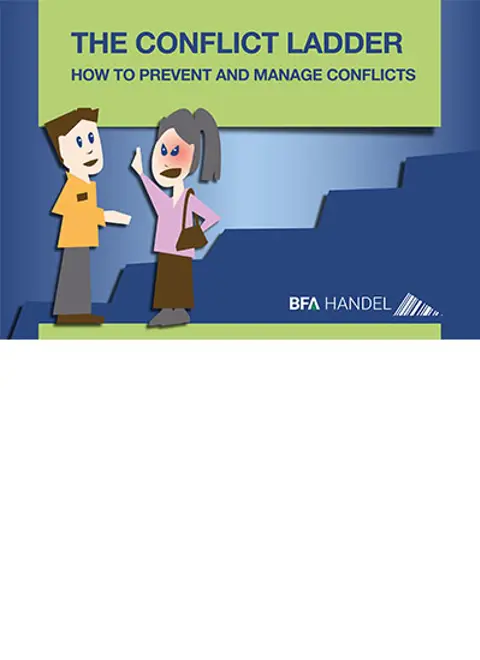Example: Charlottes broken mobile phone
Charlotte bought a mobile phone six months ago, but now the back plate has broken, and she has gone to the shop where she bought the phone to ask for a new phone. The shop assistant, Claus, offers to send the phone for repair, but the repair will take 14 days.
Charlotte is very frustrated and demands to have another phone immediately, but Claus explains that he cannot do that according to shop policy.
This makes Charlotte even more angry and she complains loudly about the shop’s lack of service. According to her, this is not the first time: One of her friends had a similar experience at the same shop. Claus becomes annoyed and snaps back that it has nothing to do with him, and that all he can do is send her phone for repair.
The situation escalates and ends in an angry dispute.
What is a conflict?
There are many different definitions of what constitutes a conflict. We define a conflict as:
A disagreement in which one or more parties become emotionally involved.
- Disagreement: A conflict always involves a matter or an issue that the parties in the conflict disagree about.
- One or more parties: Two parties might be in conflict, even though only one of them experiences the situation as an actual conflict. If the customer is angry and upset, you are having a conflict with the customer, even if you don’t feel there is a conflict.
- Emotional: What separates a disagreement and a conflict is that at least one of the parties becomes emotionally involved. In a disagreement, the parties may accept and respect each other’s opinions and discuss the matter. The disagreement only becomes a conflict if one or both parties take what the other party says personally and react by becoming angry, irritated, sad or similar.
Many conflicts arise out of misunderstandings, or because we misinterpret intentions. We can disagree fundamentally about something and have conflicting interests without the situation turning into a conflict.
Conflict can't always be prevented
Conflicts – including conflicts with customers – are part of life, and cannot be completely avoided. It is therefore important to learn how to manage conflicts when they occur, so that they do not escalate and become unresolvable. The earlier you discover a conflict with a customer, the easier it will be for you to resolve the conflict and handle the situation.
A conflict can be about a specific matter, for example a customer wanting to return a defective product, or it can be more general, for example a customer who suddenly gets very angry and you don’t really know why. Both situations can quickly become emotional, and then you have a conflict.
How people react in conflict situations differs from person to person and from conflict to conflict. There are basically three ways to react:
- To blame and confront
- To avoid and withdraw
- To be open and enter into dialogue.
Resolving a conflict requires an open approach. Otherwise the conflict will escalate and worsen, no matter whether your approach is to blame and confront or to avoid and withdraw.
Read more


